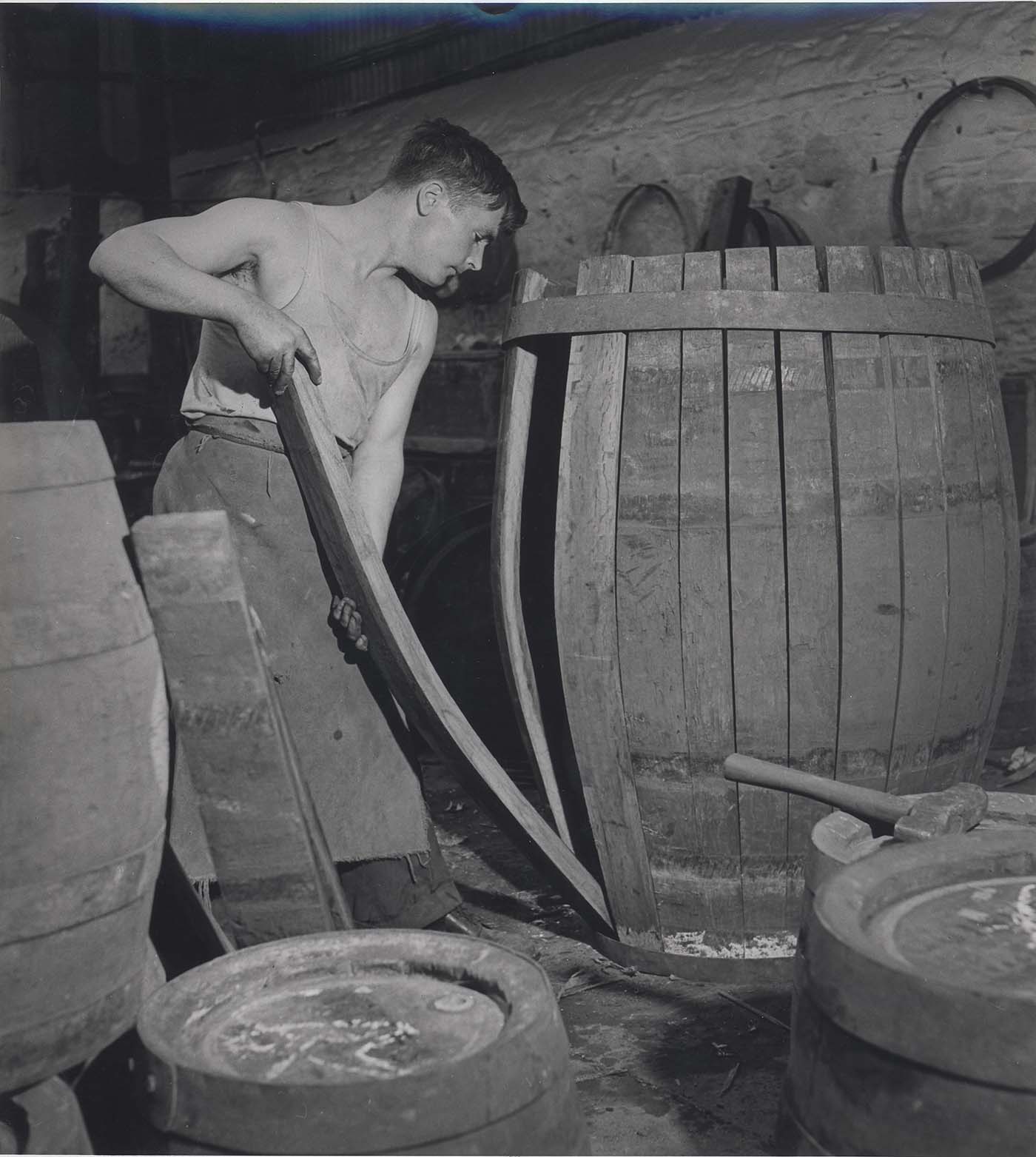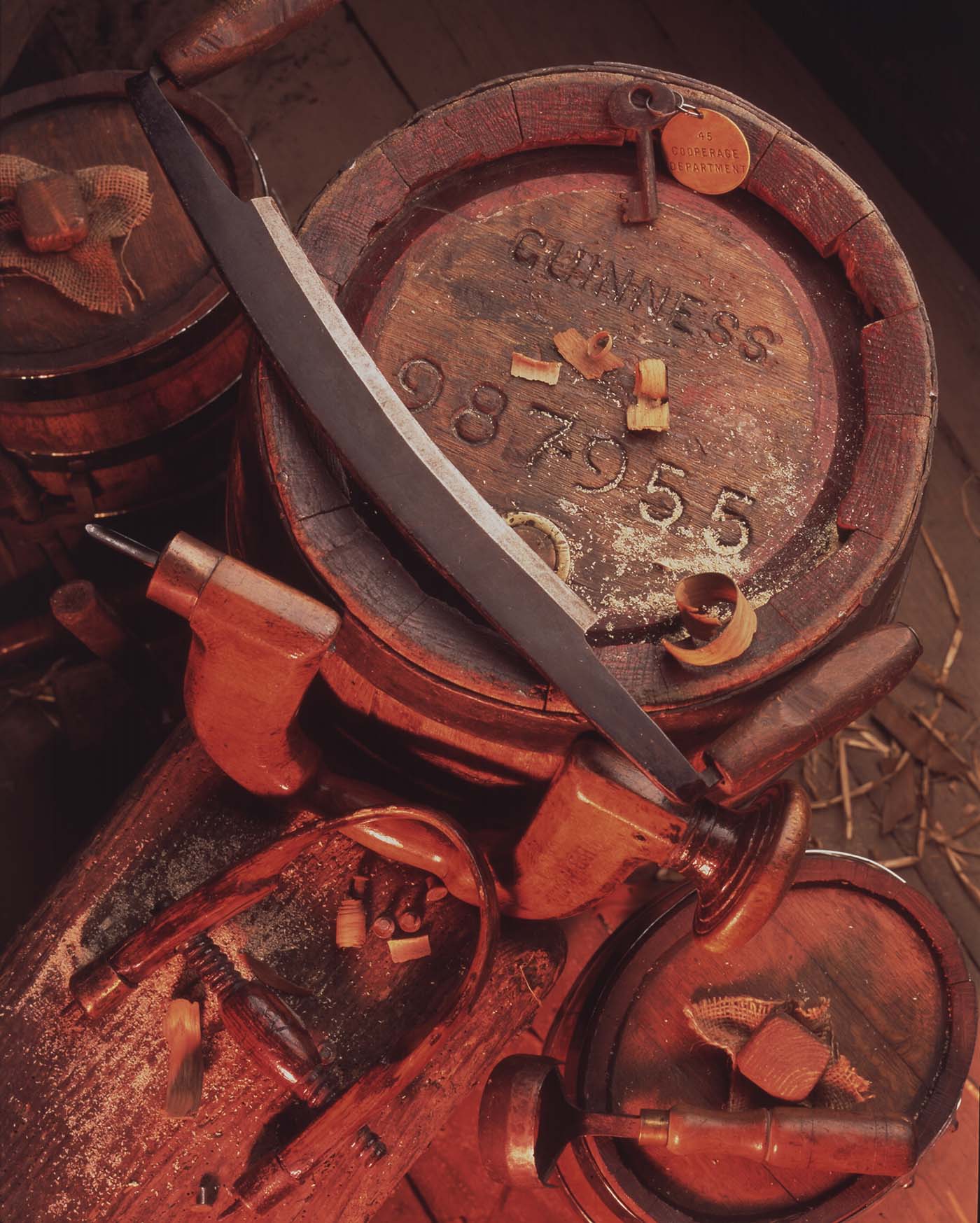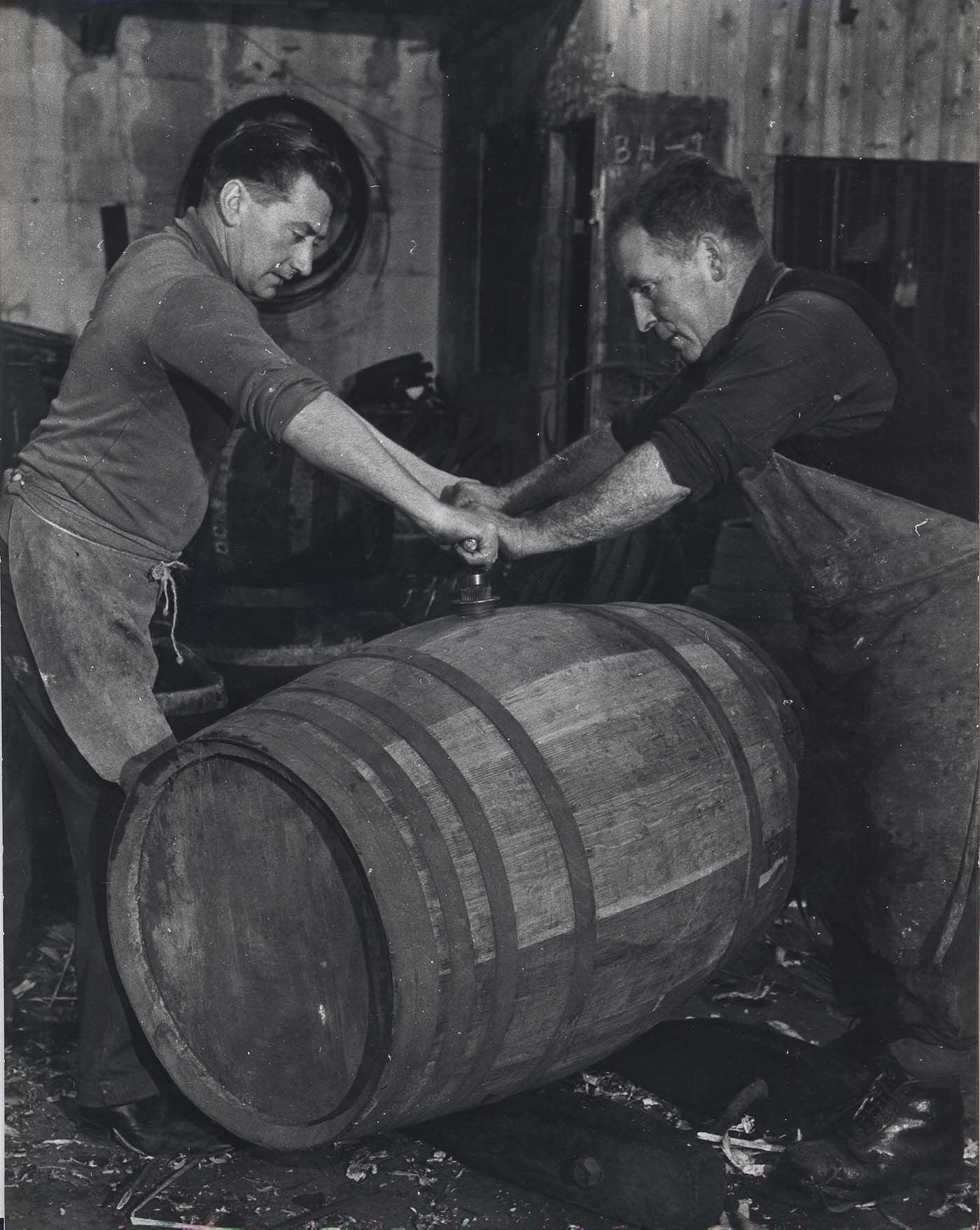A Day in the Life of a Guinness Cooper
On your visit to the Guinness Storehouse, you’ll get an unrivalled insight into the history of Guinness along with the process that goes into every pint. Part of this legacy are the casks that were used to store and transport Guinness for nearly 200 years. Coopering became a sought-after trade and, during the 1920s, approximately 300 coopers worked at the St. James’s Gate Brewery. We’ve taken a look back at what daily life was like for the people who made the iconic Guinness casks.
What is Coopering?
Coopering is the production of wooden casks. The three main categories of coopering are white, dry, and wet. Wet coopering is for casks that hold liquids – such as the wooden casks used for Guinness. As a trade, coopering demanded an enormous amount of skill and precision. This craft was learned through a rigorous apprenticeship, which could take anywhere from 5 to 7 years. Moreover, not just anyone could become a cooper. The trade was ‘closed’ meaning that it was passed down from generation to generation within the same family. It’s little wonder that it became a lucrative profession and highly in demand when the brewing industry took off in Dublin during the 18th century.

How were Casks made?
In the production of just one cask, a cooper might have used over thirty different types of tools, a selection of which you’ll find on display at the Guinness Storehouse. Using these tools, they would fashion the ‘staves’ – the flat wooden sticks that together make up the whole barrel. Impressively, every part of the cask was made by hand without any measuring devices and using no adhesives. The precision required to fashion the staves and metal hoops that help them stay in place without any sticking agents was part of the reason this trade was so highly skilled.
But not all casks were created equally. There were a variety of different cask sizes, including:
- Firkin – 68 pints capacity
- Kilderkin – 134 pints capacity
- Barrel – 264 pints capacity
- Hogshead – 416 pints capacity
- Butt – 856 pints capacity

Types of Coopers
As Ireland’s biggest employer during the time, there were more coopers employed in Guinness than anywhere else in the country. Coopers were the highest paid tradesmen within the brewery owing to their specialised skill set, along with the time finishing an apprenticeship could take. A cooper could also be paid per cask rather than a weekly wage. This ‘piecework’ rate benefited coopers who could combine speed and quality with a handsome profit. Coopers on ‘piecework’ could often make up to four times as much as a cooper on a wage.
On average, it took approximately two and a half days to make each cask and 100 casks a week were made within the Guinness cooperage. Of course, with this level of production, there were different coopers responsible for different parts of the process. One such specialist was the ‘pick man’. This cooper met the casks when they were taken off the trucks for refilling. The pick man’s expertise came in knowing exactly how to strike the cask to knock out the ‘bung’ (the wooden plug in a cask) so that it could be properly inspected and cleaned. Similarly, coopers were responsible for the cleaning and repairs of casks. Guinness employed around thirty ‘smellers’ whose sole task was to smell the casks to ensure it was fit for refilling. Casks unfit for use would acquire a foul smell, usually the result of being left empty for too long.
Life as a Guinness Employee
During the late 1800s, a period of economic uncertainty, Guinness was both the biggest and one of the most sought-after employers in Ireland. Guinness employees benefited not just from job security and a salary consistently 10-20% higher than the Dublin average, but an employer with the interests of their employees at the forefront of their practices. Before old age payments were introduced by the State, Guinness was paying employees pensions including stipends to widows and orphans of former employees. Additionally, a cooper at Guinness would have enjoyed free healthcare from 1870 onwards when the first medical centre was established on the premises of St. James’s Gate Brewery. The cooper, along with his family, would have been entitled to free treatment at the medical centre, a benefit which would continue throughout their retirement. Should the worst befall, the cooper’s family would also have received a grant for his funeral – an often-crippling expense for most of the working-class families in Dublin at the time.
After a hard day’s work in the cooperage, a cooper could partake in one of the many societies funded by the company. The Guinness Athletic Union (GAU) was founded in 1903 to foster athleticism and sportsmanship among the staff and employees within the brewery. It worked a charm and soon Guinness was famous for its football and tug of war teams. By the 1960s, the sports covered by the GAU expanded to include hockey, handball, rugby, boxing, athletics, GAA, cricket, golf, swimming, table tennis, squash, and angling.

Uniform
Guinness uniforms were not just practical, but a matter of pride. It helped to distinguish between the various roles at the brewery along with representing the company to everyone outside of the walls of St. James’s Gate. A Guinness cooper would have worn a suit made of wool including jacket, trousers, and waistcoat. Beneath it he’d wear a white shirt, with workman's boots and the classic bowler’s hat in vogue at the time. During the process of cask-making, coopers would have removed their jackets and wear a protective apron to protect the rest of their clothing.
Holidays and Excursions
The benefits of time off and away from work were implemented into the Guinness way of life, even in the 19th century. The Guinness Fanciers’ and Industrial Association was set up in 1893. The Association centred around holding competitions, covering everything from dog breeding to wood carving, photography, penmanship, and dancing. Employees were encouraged to take the day off and bring their families (or friends) to the show held at the Royal Dublin Society Grounds in Ballsbridge between 1901 and 1914.
What’s more, coopers could also enjoy an ‘Excursion Day’ where train tickets were provided by Guinness for the employee and his family. This could be taken at any time during the summer months. The cooper would also enjoy an additional gratuity for the day to make it extra enjoyable.
The Legacy of the Cooperage Today
Though wooden casks are no longer used to store and transport Guinness, their manufacture forms part of the Guinness legacy that continues to be remembered and celebrated within the Guinness Storehouse. Aluminium kegs began to replace wooden casks in 1946 and, by the late 1980s, stainless steel kegs had taken precedence. While the last wooden cask was filled at St. James’s Gate in March 1963, visitors to the Guinness Storehouse can explore the Cooperage Display to see a vital part of the history in the Guinness story.